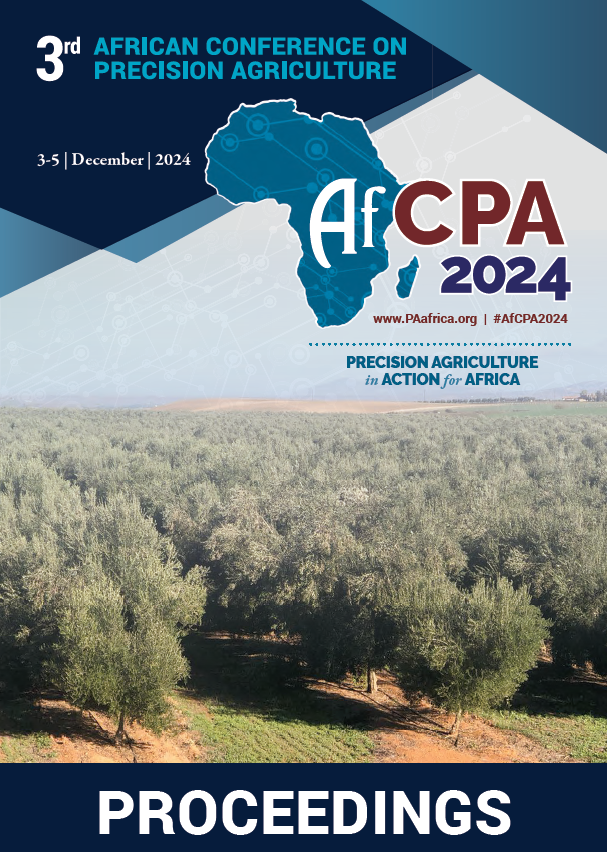Download the Conference Proceedings
Proceedings
Authors
| Filter results3 paper(s) found. |
|---|
1. Potential precision agriculture practices for higher fruit and vegetable production in West Africa: A ReviewDuring the last decades, efforts have been made to increase the yield and the quality of major fruits and vegetables but still, farmers mainly those in West African countries are struggling to close the yield gap. Precision agriculture has been reported in most developed countries as a set of tools integrating information and technologies for efficient crop production. Over the decades, scholars have been skeptical about the development and implementation of precision agriculture in West Africa... V. Fassinou hotegni, L.W. Azonhoumon, E.G. Achigan-dako |
2. Engaging Stakeholders in Precision Agriculture Toolbox Conception: Case of Cowpea Atlas Platform Establishment in Benin RepublicCowpea [(Vigna Unguiculata (L.) Walpers] is among the most preferred and consumed legumes in West Africa and grown by many smallholder farmers. The crop has huge potential, is easy to grow and constitute a source of income of many actors involved in different value chains. Unfortunately, despite many interventions which aimed at promoting the crop in West Africa mainly Benin, areas under cowpea crop decrease over the years along with the loss of cowpea-based products. Such problem is... N.V. Fassinou hotegni, Y.L. Godonou, L.M. Gnanglè, O.N. Coulibaly, E.G. Achigan-dako |
3. Capacity Building of African Young Scientists in Precision Agriculture Through Cross Regional Academic MobilityClimate change is one of the main problems affecting food and nutrition globally, particularly in sub-Saharan Africa. Adapting to and/or mitigating climate change in the agri-food sector requires merging information technologies, genetic innovations, and sustainable farming practices to empower the agricultural youth sector to create effective and locally adapted solutions. Precision Agriculture applied to crops (PAAC), has been advocated as a strategic solution to mitigate/adapt agriculture at... K. Frimpong, V. Fassinou hotegni, A. Karangwa, A. Manyatsi, M. Amri, D. Cammarano, C. Lesueur, J. Taylor, S. Phillips, E.G. Achigan-dako, G. Houessou, O. Linkpon, D. Tchokponhoué, C. Houdegbe, C. Adje |
